#youtube is being slow with uploading videos so i just kept drive links
Explore tagged Tumblr posts
Text
Gif Tutorials
Hardly anyone asked for these but I’m finally sharing anyway lol
Here are two tutorials I made on how to make gifs! They’re both fairly basic (and I’m no expert), but I think they do good on sharing the basics of gif making.
Below are the programs I use. I would say no prior knowledge of them is needed, but it would help to be at least a bit familiar: -OBS -Openshot video editor -Photoshop
*OBS and Openshot I only use for recording and editing video; if you are making gif from still images, you do not need them
**Only first video has audio (just a simple song I put on it), the other does not. If you find yourself struggling to follow along with the video or just need more explanation to processes, I recommend reading the doc I share at end of post! I also recommend watching the videos in full screen mode to see everything clearly
First video: In this video, I show how I made the Victor and Yamachan gif aka how to make a gif from video. It’s pretty short, tho there is some parts where my internet lagged while filming,, It also shows how to export a gif and settings I use
https://drive.google.com/file/d/1lRu1_rYnifYeat6XbgtOUOmHqQE9ZSPb/view?usp=sharing
Second video: In this video, I show how I did the glitch effect for the one zombie hospital gif. Glitch effect aside, it also demonstrates how to make a gif from still images.
https://drive.google.com/file/d/1j6UBEO2Bhtq8rBwdO9rIBw7QksxSGAe4/view?usp=sharing
Lastly, here is a written version of the second video as well as how to export a gif and the settings used: https://docs.google.com/document/d/1VOfNHpeefQJY0OVfJ3JBAltqw0J_UJBIeCxC_QqgVrU/edit?usp=sharing
I may remake these in future or change links to be on youtube but i’m too lazy rn and this works fine
Please feel free to hmu if you have any questions! Sorry about the wall of text,,
#ts4 tutorial#gif tutorial#my tutorials#s4tutorial#sims4#idk how all to even tag this lol#youtube is being slow with uploading videos so i just kept drive links#hopefully this helps someone#i have no speaker so yeah thats why no audio#and why i made doc
56 notes
·
View notes
Text
Ramblings: Wheeler Wheeling, Andersen Rolling, Primary vs Secondary Points, & xGF (Nov. 10)
John Klingberg had surgery on his hand on Friday and will be out four weeks. That’s a huge blow to owners as the 26-year-old was clicking along at nearly a 70-point pace.
This opens up a massive opportunity for Miro Heiskanen who will eat up those top power play minutes. The 19-year-old is a freak. If you haven’t watched him play yet, you need to. He makes the right decision on almost every play. He’s confident, creative, and loves to use his wheels. If it wasn’t for Elias Pettersson, he’d be getting a lot more chatter about the Calder.
This four-week run should boost his point totals and his league-wide scope. If he’s on the wire, grab him now.
**
The Maple Leafs took the boots to the Devils on Friday evening. It included a four-goal second period that saw four different Toronto players find the back of the net.
Morgan Rielly continued his torrid pace with a goal and an assist. The 24-year-old is up to seven goals and 20 points in 16 games. That pushes him two points back of Thomas Chabot for the league lead amongst defenders. (more on Chabot later).
Freddie Andersen kept the door shut for most of the evening and continued his early-season success. His inability to show up in October and November has become routine in past seasons, but he appears to have shaken that habit in 2018-19. Andersen shares the league lead in wins with nine and is sporting a 0.933 save percentage – good for second best amongst starters.
Roll him out without hesitation.
Nazem Kadri has seen his production take a nice jump with Auston Matthews out. The former 30-goal man has four goals and six points in those six games. Five of those points have come at even-strength as he’s gotten comfortable with Kasperi Kapanen and Patty Marleau.
Expect him to return to grind time when Matthews returns. Ride the hot streak while you can.
**
The Jets have been out of the limelight for a little while. They had a long break to travel to Finland for the Global Series where they quickly played two games that ran during the day in the middle of the week. They’ve now been off another six days to travel home and reacclimatize. This hasn’t slowed Blake Wheeler down one iota
A five-point night on Friday highlighted Winnipeg’s 5-2 victory over Colorado. Wheeler has had a hand in 10 straight Jets' goals including his fourth assist of the evening which was extra saucy.
https://dobberhockey.com/wp-content/uploads/sites/2/2018/11/Wheeler-Sauce.mp4
It was the first five-point game of Wheeler’s career. He also hit (and surpassed the 400 career assists) in the process. After setting career-highs last season, the 32-year-old appeared poised for a hefty regression.
Perhaps not.
Outside of tonight, he hasn’t even been playing his best hockey. That’s pretty scary.
**
It was a quiet night for the Avs big line. Mikko Rantanen has gone pointless in his last two games, and three of the last four. His perch atop the NHL scoring leaderboard may be slipping away.
**
Sergei Bobrovsky seems to be waking up. He made 33 of 34 stops on Friday night to beat the defending Cup champion Capitals 2-1.
Bob has allowed a single goal in four of his last five starts and his save percentage is inching closer to league average. He sits at .909 on the season but he has a 0.952 mark stretching back to October 30th.
The Blue Jackets need him to be the backbone if they plan on making any noise this year. Bob’s wallet needs it too. We all know he’s looking for big-time money this summer. A down year won’t play out well for him.
**
The Blues shutout out the Sharks 4-0 on home ice. They received balanced scoring as four different players hit found the back of the net.
Chad Johnson won for the second consecutive start and has allowed just one goal on 72 shots over that span. With Jake Allen being made of cheese this season, it’s likely Mike Yeo will turn to Johnson as long as he’s winning.
Another streamer to ride.
**
For those looking to the future, Jack Hughes and his USNTDP mates are in the Czech Republic this week for the under-18 Five Nations Tournament. Here’s what he’s done thus far:
Game 1 – Two goals, two assists
Game 2 – Three goals, two assists
Game 3 – One goal, FIVE assists
The consensus number one selection in the upcoming draft has 15 points in three contests and has been dominating all over the ice. He sits firmly in the pole position for my recently updated 2019 NHL Draft Rankings
{youtube}hbhwvUvkeKU{/youtube}
**
Don’t let anyone tell you that a point is a point. While that may be true in the moment and even more so on the fantasy scoreboard, there is a marked difference between the type of points a player produces in his quest to replicate and sustain production over the long term.
Primary points – especially those at even-strength are one of the great beacons of evaluation. These points are often indicative of a driver of play. You directly led to a goal, or you found the back of the net yourself.
This isn’t to say that a secondary assist can’t have had a direct link to a goal. Nor is it saying that a tap-in from the doorstep or a point shot glancing off a player’s ass represents a driven play. But when compiling and breaking down statistics, the general rule holds water.
Most players have around 15 games under their belts this season. That represents 18 percent of the campaign. Enough to start considering rates as potential themes.
The top players on this list have something in common – They either get carded at American pubs or aren’t even allowed through the front door. The average age of the top five is 21 years 11 months.
Even-strength Primary Points (*Stats as of Friday morning)
Mitch Marner – 4 goals, 9 assists in 15 games
Brayden Point – 7 goals, 5 assists in 15 games
Nathan MacKinnon – 9 goals, 3 assists in 15 games
Kasperi Kapanen – 6 goals, 5 assists in 15 games
Elias Pettersson – 7 goals, 3 assists in 10 games
You may have noticed that the youngest player on this list may sit fifth overall, but is clicking at the highest per-game rate. Overall, Pettersson has 17 points in 11 games. 15 of those points have been primary. 94 percent of his even-strength production has been primary. It’s an insane metric that will not be sustained. But it is indicative of his play-driving ability and the likelihood of big numbers to come.
Connor McDavid has led the league in five-on-five primary points the last two seasons. In 2016-17 he racked up 50 in 82 games. Sidney Crosby was his closest competitor with 43 in 75 games. Last season McDavid accrued 51 in 82 games, while second place was MacKinnon with 45 in 74. Their primary-points-per-60 rate was around 2.3-2.45.
Pettersson is currently producing at a 4.67 P1/60 at five-on-five.
Marner and Point are two players who have been producing at a near-elite pace at even-strength since last season but hadn’t elevated their man-advantage numbers to the same levels. I dug into Point last week. Marner is on pace for 33 power plays this season which would represent a six-point increase from last season.
Nate MacKinnon is the second-best fantasy asset in the world. This underscores it.
Kapanen is interesting. He’s seen time next to Matthews and that’s surely helped with his six goals at evens. Since Matthews went down with the shoulder injury, Kapanen has two points in five games. One primary. The deployment will be key for him, but his early returns have been positive.
**
As important it is to recognize players who are driving play, it also behoves you to differentiate them from the passengers. Passengers are players who tend to come along for the ride. They can compliment. They can chip in. But they are usually reliant on their mates versus the other way around.
Players who generate a bunch of secondary points aren't necessarily passengers but they are more likely to see that area of production dry up sooner rather than later. If it’s a superstar than their totals will be fine regardless. But here are a couple of guys who are clicking at a high rate because of their secondary points.
At the top of the heap sits, Thomas Chabot. The second-year defenseman has been out of his mind this season. He currently occupies third spot on the NHL point leaderboard with 22 points in 16 games.
Of those 22 points, 13 are secondary assists.
Now I don’t need to tell you that Chabot won’t be playing at a 113-point pace for the remainder of the season, but many are climbing on him as a player capable of 75-plus. He’s banked enough points now to clear 50 if he stays healthy, but anything more than 55 should be considered huge value.
I’d definitely be shopping him around in one-year leagues and taking swings at some whales in keepers with him as a key piece heading out of the door.
**
Another defender to watch out for is Mark Giordano. He looks rejuvenated in Calgary early on, but watch out for the slowing train. Of his 13 assists, eight are secondary.
**
Sean Tierney, aka @ChartingHockey as some terrific stuff out there for free to the public. One of the things I enjoy looking into his Expected versus Goals charts. He released an updated look on Friday morning and the results paint a vivid picture.
For those who don’t know, here’s Sean giving a little synopsis.
“I’d put it like this: Each shot a player takes has a value based on the likelihood that similar shots from similar locations have been goals in the past. xGF is the sum of all these weighted shot values. Those values themselves are based on historical averages.
Which is partly why a critique of xGF is that some shooters (Stamkos, Ovechkin, etc..) who convert more often than we expect from the lesser valuable spots. But players who truly outperform expectations over a multi-year sample are so rare that they can be treated as exceptional, then as cases that undermine the value of the xG stat.”
Look for the exceptional on that list. Expect those who don’t fit the bill to see a reduction forthcoming.
**
That's all for this week. Feel free to follow me on Twitter @Hockey_Robinson
from All About Sports https://dobberhockey.com/hockey-rambling/ramblings-wheeler-wheeling-andersen-rolling-primary-vs-secondary-points-xgf-nov-10/
0 notes
Text
Evaluation question 4
How did you use media technologies in the construction and research, planning and evaluation stages?
1. Research
Youtube
During the research stages of my project the primary source of research came from Youtube, this was because it hosted everything from professional productions to amateur projects.This was especially useful, as it brought all the content i needed to use within my research into one place where i compiled various videos into a playlist, allowing me to access them quickly at any time.

Tumblr
After carrying out the research i used a Tumblr blog to compile all of my research, this was useful because of how it began to create a chronological timeline of the progress being made in the planning stage. It also was able to host a wide variety of content, anywhere from text to links to video/photos. This worked well in harmony with youtube, as i used youtube as a hosting service to upload all of the videos recorded for the blog.

Reddit and Audience research
When collecting the audience research there were a few methods we used to collect the data needed. Firstly we put various posts on forums like Reddit to gain random individuals feedback on the various conventions they’d like to see within a documentary. Though the limitation of this was that the people replying to the posts gave little constructive input and most just were there to take the mick. The more successful audience research was when i used my smartphone to film various students, asking them about the conventions of documentaries and which ones they would prefer to see in a production. This was extremely insightful and gave us the vital information needed for the planning stage.

2. Planning
WhatsApp
During the planning stages it was vital that the various aspects of the planning were shared between the two of us in the group and some of the actors that willingly agreed to participate. Because of this we opted to use WhatsApp on our phones which is a messaging service that incorporated file sharing within our group chat. This meant word files, images and videos could be easily shared around the group.

Google Docs
Possibly one of the most useful pieces of software in the planning stage was Google Docs, this was primarily due to its online multi edit function. What this meant is that two people could edit the same document simultaneously, so during evenings we could collaborate on scripts and plans while in a phone call to communicate.

Google maps
Google maps proved to be an essential tool during the planning stage, as it allowed us to find locations easily in the classroom without physically going out and looking for locations. It also allowed us to reference the locations shown on the Police.co.uk/kent/crime site showing crime rates to locations on google maps so we knew to film in areas where there were high crime rates to fit with the documentary.
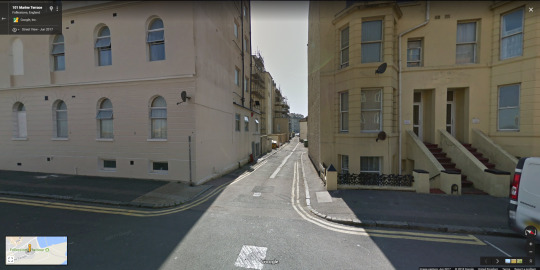
3. Construction
Camera
During the construction stage the cameras we used were two sony a6300 cameras, as they had the ability to film in UHD 4k and 120fps HD for all of our slow motion shots. It also has amazing low light capabilities which was essential, as a lot of our scenes were filmed at night when lighting is typically the main problem faced.

Accessories
As well as using a tripod for the static shots, when we needed the extra stabilisation but did not want to have to set up a tripod every two minutes, I used my video mono pod which was more than stable enough for on the go filming on limited time frames.
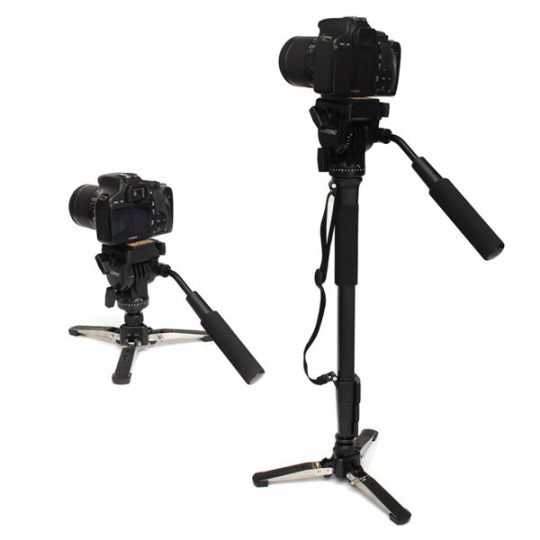
Audio
In terms of the audio, we received a lot of negative feedback in the previous project because of wind noise and general bad quality audio, so in this project we used a Rode videomic Go that provided directional, clear audio coupled with a dead cat muffle to eliminate wind noise. This turned out to be a very versatile setup, as it worked well on the camera but also as an effective interview mic when used with a long extension cable.
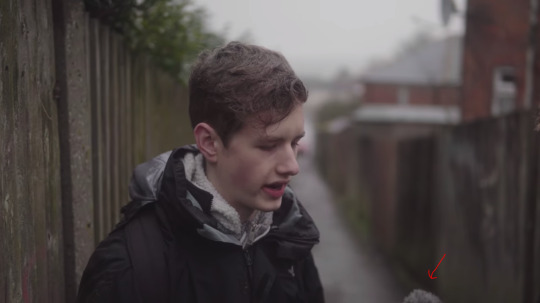
Another microphone we used was a Snowball microphone on a desktop that provided clear audio for the voice overs laid over the top of the project. I would have also liked to used my Lav microphone which would have been very useful for close up audio when a microphone is needed to be kept out of shot, but i had limited success, as the microphone refused to work.
Transport
During filming we had various locations scattered all over the local areas to film at, coupled with a few scenes that were shot in the car. This meant that access to a car was vital during filming, without this we would have had to rely on others to drive us around which can be tedious because of their time restraints and having to organise far in advance. This would have slowed down and extremely limited filming.
Editing Software
While editing the project we used Adobe premiere pro, this was for a number of reasons that put it above other options out there. Firstly, it incorporated crucial colour grading into one program, saving having to import and export each individual clip after grading. It also has various interfaces for each aspect of editing (assembly, audio, colour grading) which allows each interface to be tailored for its specific usage, this helped save a lot of time when editing. Lastly, Premiere pro allows for customise-able shortcuts for tools like ‘trim’ or ‘move’, making the editing process much more efficient and less tedious.
Coupled with the editing software, we only used SRGB monitors to colour grade and edit the footage, as this provides 99% colour accuracy in the image. I did this because of issues faced in the previous project where low accuracy monitors caused a lot of the footage to have strange tints that weren’t noticed in the editing stages.
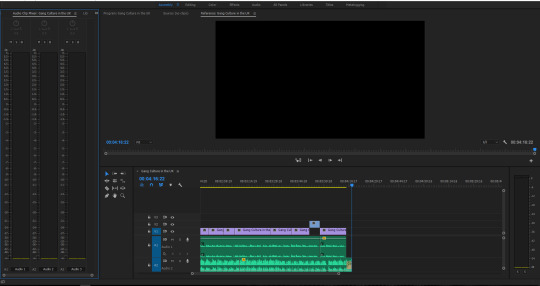
When selecting the music for the project, we used Audio Network, a service that provides a wide range of high quality music to be used freely. they could also be ordered by mood or genre which was especially useful when narrowing the choices down from lists of thousands of tracks.

Ancillary tasks
When creating the ancillary tasks we went out and took images with the a6300, where the images were imported to lightroom to give them the colour grade that fit with the documentary itself, creating a connection between the two. The edited images were then imported into Photoshop where text and logos were added to make the images into a poster and magazine double page spread.
To see the process, follow this link - https://youtu.be/2u6fZw233MU
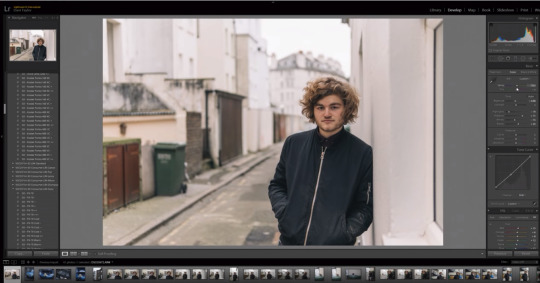
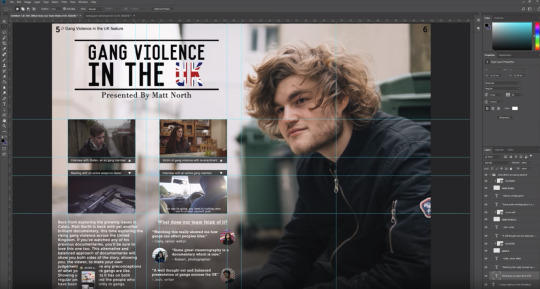
4. Evaluation
Feedback
During the evaluation stage we used youtube to host the final product online where we then showed it to various members of our class to see their opinions on it about which aspects had worked and what could be improved if it were to be filmed again. This was filmed on our smartphones, as it did not need to be of high quality and this saved a lot of time, as the large camera takes a lot of post processing to bring it to the final product.
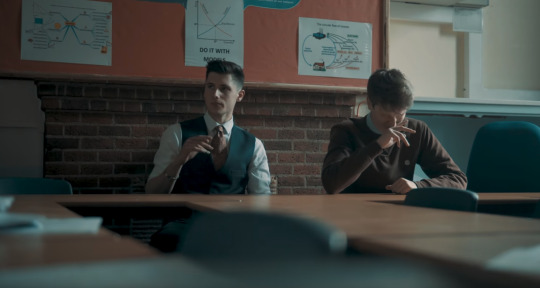
During the other questions i used a generic desktop microphone with audacity which created good enough audio for voice overs when used with a noise reduction filter.
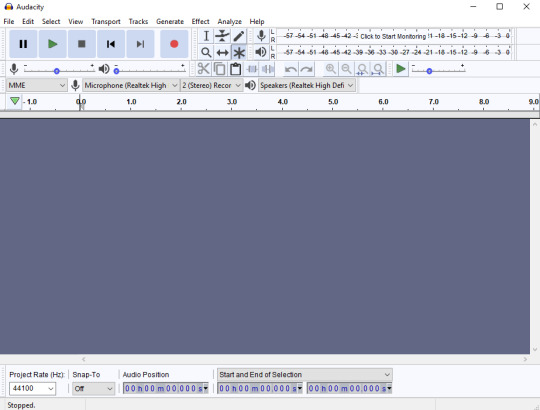
Overall using a wide variety of media technologies alongside our knowledge of them has been essential to the quality of our final project, with each piece of technology providing a unique usage contributing to the level of success of the project.
0 notes